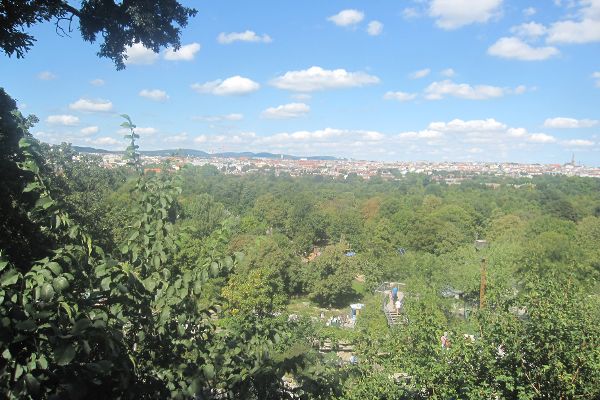What does society expect from Austria’s forests?

Preserving traditional values and implementing innovative ideas do not contradict each other; in fact they can work harmoniously, with the best solutions to the diverse challenges faced by forest owners face being those that combine the two.
It is vital to establish networks through which society can interact and determine the most effective forest policy, based on combining past experiences with research, and with the goal of satisfying both public and private interests.
Question: “What does society expect from forests?”
In order to answer this question, it would be useful to examine current ‘megatrends’, or major socio-political ideas and/or movements that capture society’s imagination.
The findings obtained from trend research can be summarised as follows:
- The rising prosperity that marks our era brings with it the growth of new forms of poverty in our country.
- Promote the shortening of working hours
- Increasing leisure-time and greater recreation opportunities has resulted in the emergence of a ‘wellness boom’; that is, these new opportunities have brought with them a growth in alternative sports and adventure tourism, coupled with higher acceptance of risk
- Higher life expectancies have resulted in the greater share of the elderly in population pyramids
- Comfortable living conditions
- The presence of an extraordinarily lengthy period of peace in Europe
- Migration has seen a trend towards urbanisation coupled with an exodus from peripheral areas
- Highlighting greater disparities between urban and rural areas
- Structural change with decline in the rural population
- Rapid changes in working environments and the development of new markets
- Highlighting both the positive and negative effects of globalisation
People are now finding values in completely new ideas; church-going communities are witnessing an increase in spirituality, while at the same time esoteric movements are booming- with some social events even resembling substitute religions. There are also many committed, responsible and forward thinking young people in Austria. Further, it is the presence of open-mindedness and tolerance, as well as a diverse breadth of knowledge, coupled with the motivation of responsible and environmentally-conscious consumers, that will facilitate the implementation of strategies for a sustainable Austria.
Social values:
For many generations, forests have been preciously treasured and sought after due to the abundance of wood found there, which could then be used for a wide range of purposes; in fact, historians suggest that man lived in a “wooden age” until the discovery of fossil fuels.
In many religious, forests are seen as having a great spiritual value whose roots go far back in history.
Although humans always had to clear parts of the forest in order to construct settlements,, the forest ecosystem as a whole has cultural significance and steps were therefore taken to preserve it.
However, wood and forests were always in abundance historically, leading people to take them for granted; in fact, it was only after centuries of overexploitation did wood become scarce, and subsequently people became aware of the great production value found in forests. As a result, since the Middle Ages, ensuring the continued supply of wood in times of crisis has gained importance.
Forests represent economic capital through their potential of providing wood and non-wood products. In addition, a service sector may arise around forests in the future.
At the turn of the 19th/20th century, when the recreation and tourism sectors started to develop, forests became popular to visit due to its natural beauty. This has continued to occur even today, with forest tours amongst other things being organised.
With the general improvement of working environments and conditions as a whole, issues surrounding job satisfaction for individuals working in forests has become important.
For roughly 150 years, scientific inquiry has highlighted the importance of biodiversity to the forest ecosystems, such that the nature conservation movement has, for the last 100 years, attempted to preserve and promote this importance. As a consequence, the promotion of biodiversity was declared a general public interest at the last UN Environment Conference.
Finally, the cultural dimensions of forests and the great number of cultural assets associated with forest ownership have gained significance.
The importance of these demands on forests constantly change, both either positively or negatively, and reflect the changes in social trends and needs, which is in turn based on a country’s level of development. Scientific studies provide further proof of these correlations.
Forest effects, new topics and balance of interests
The effects of forest habitats are set out in the Forest Act. The 2002 Amendment to the Forest Act made clear that each and every forest is also recognised as a habitat. In recent years however, discussions about the role of forests in preserving the water supply, and ensuring climate protection and biodiversity have gained importance.
Forest policy focuses on achieving an optimal balance of interests between forest owners and other social groups.
The so-called “bottom-up approaches” are particularly useful in ensuring this interaction works perfectly for all parties concerned, since these approaches are characterised by forums and discussions, information sharing, consulting servicing, decision-making aids, expertise and training.
In contrast, ‘top-down’ policies, where the state issues statutory control measures and safeguards, should only be applied where necessary.